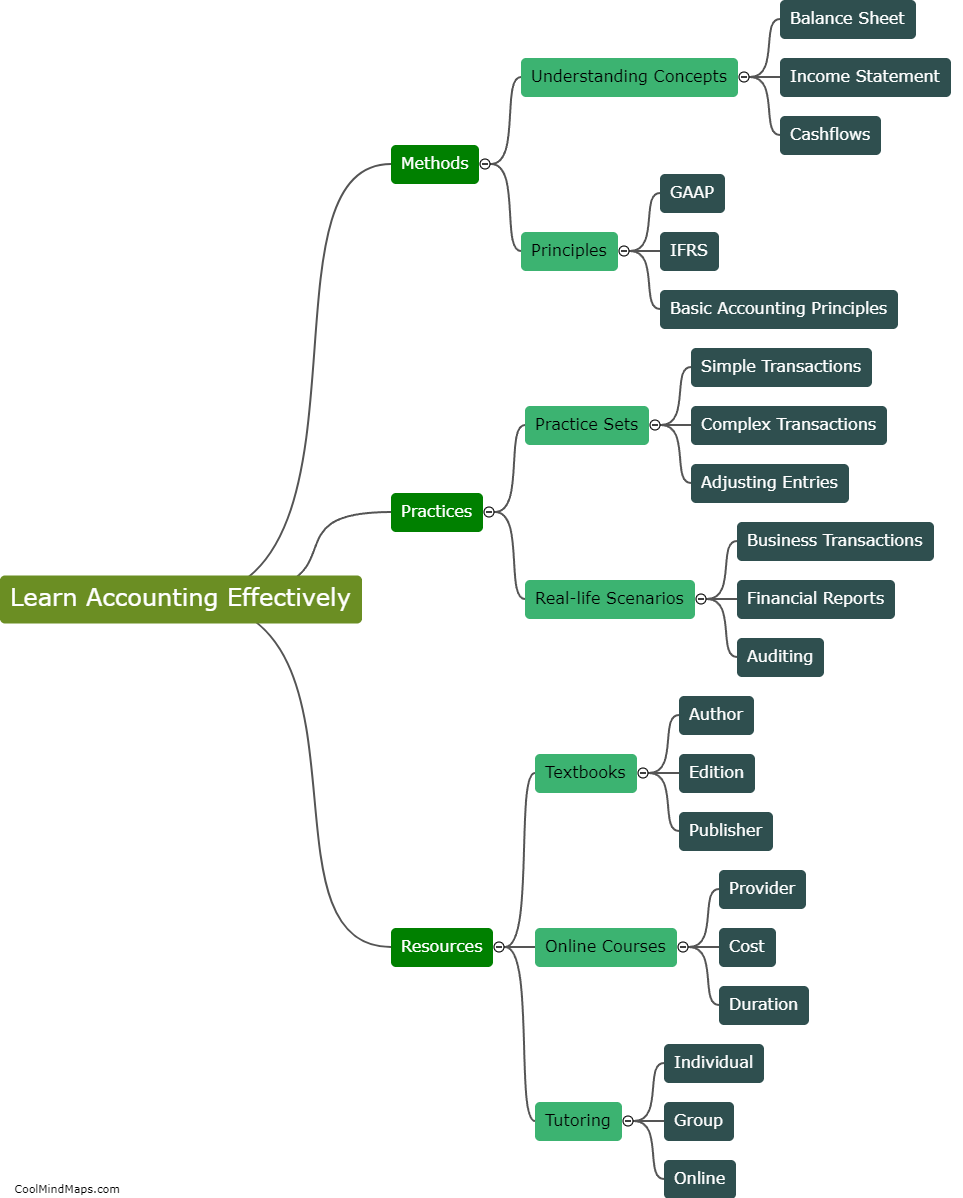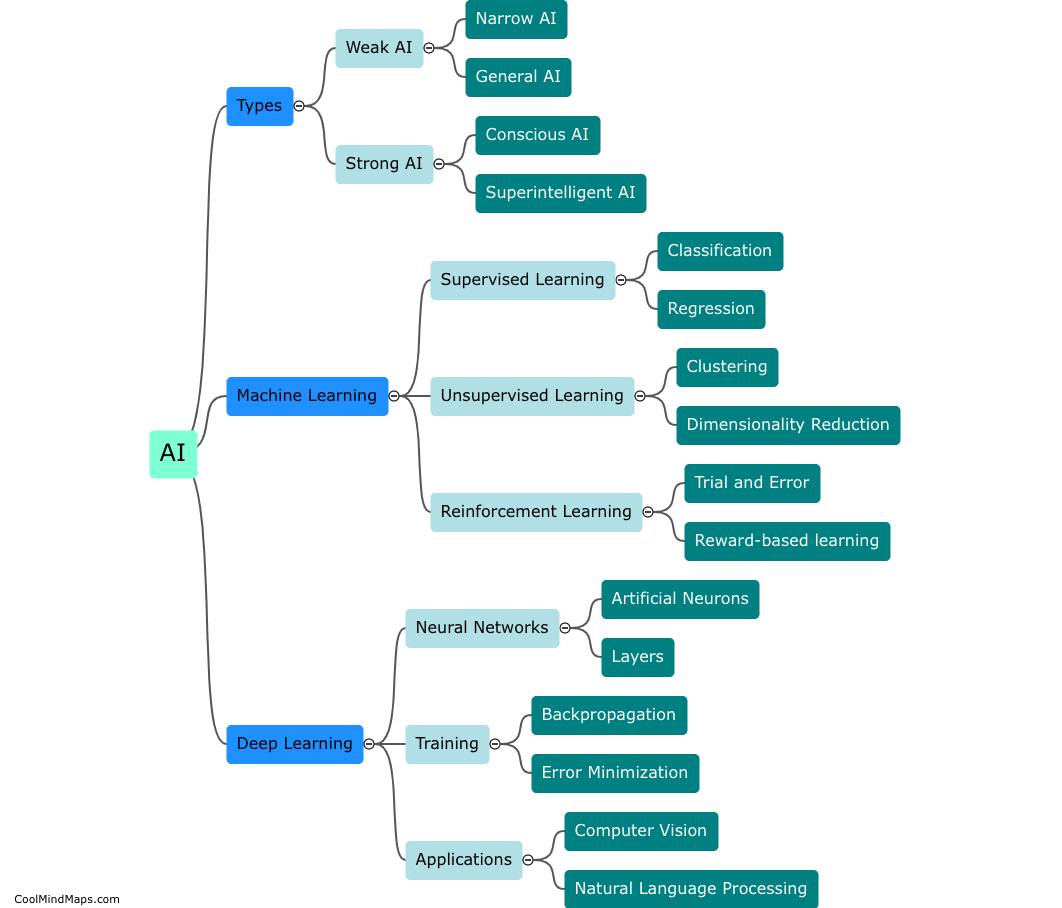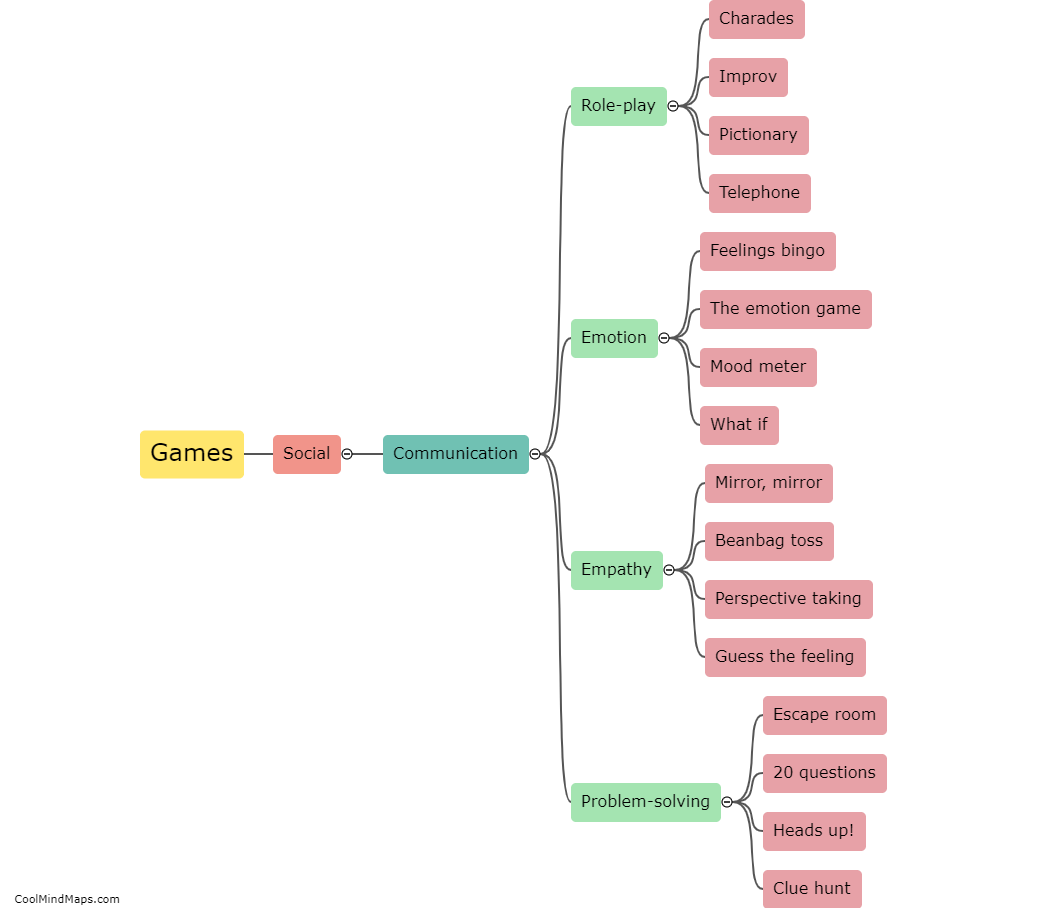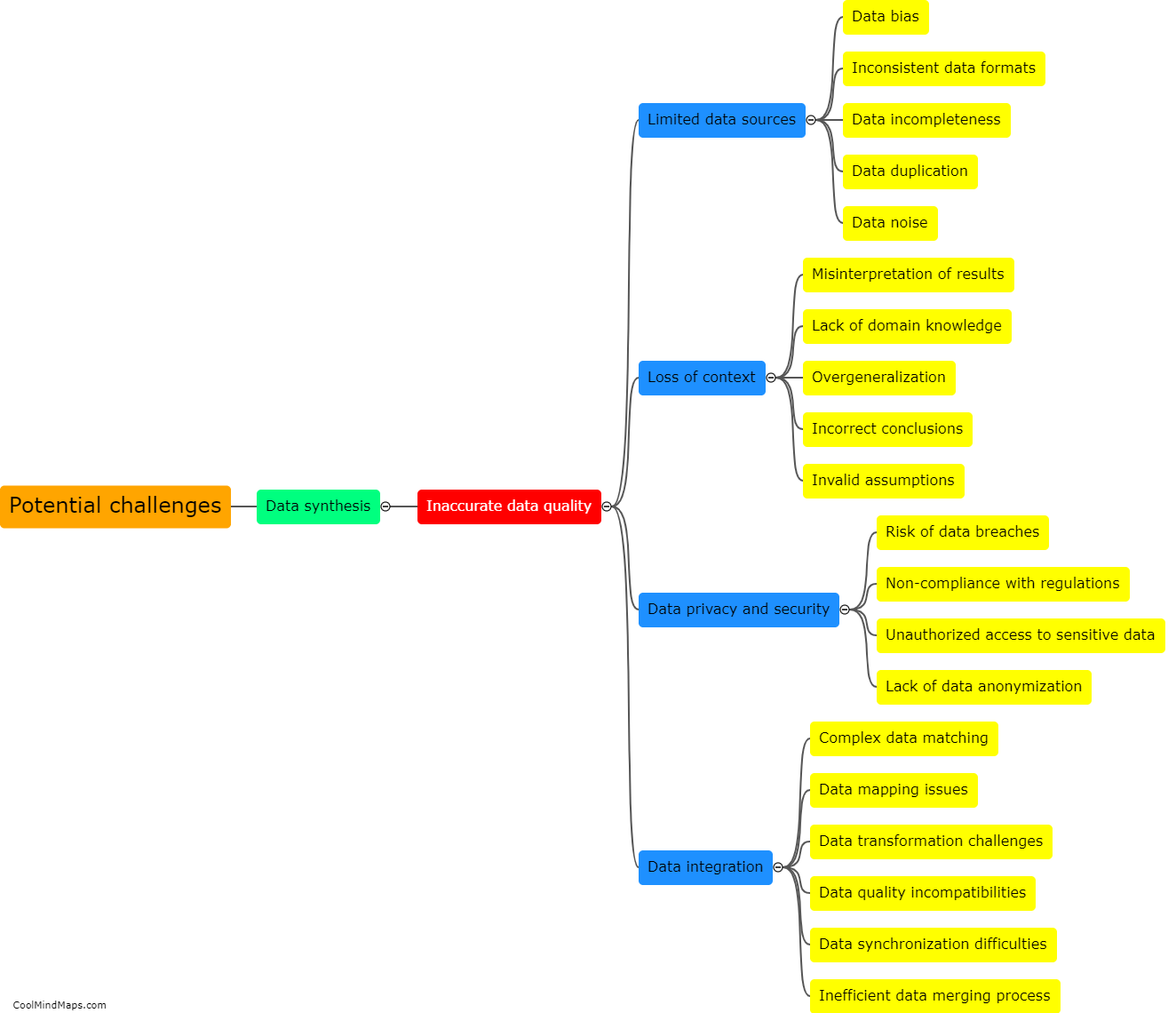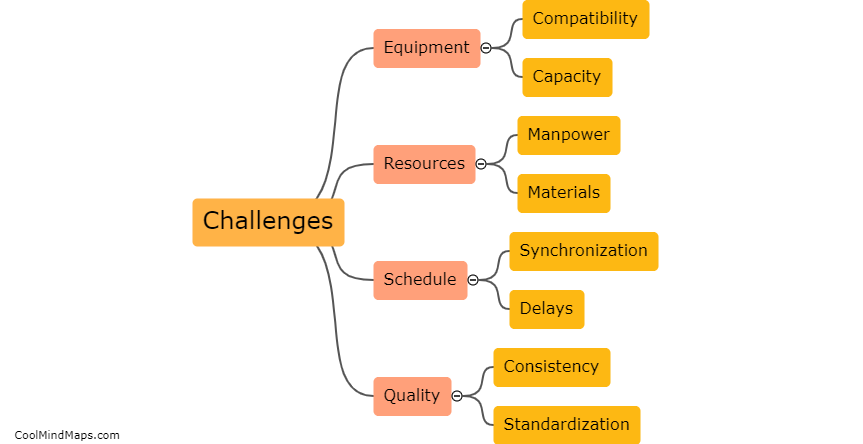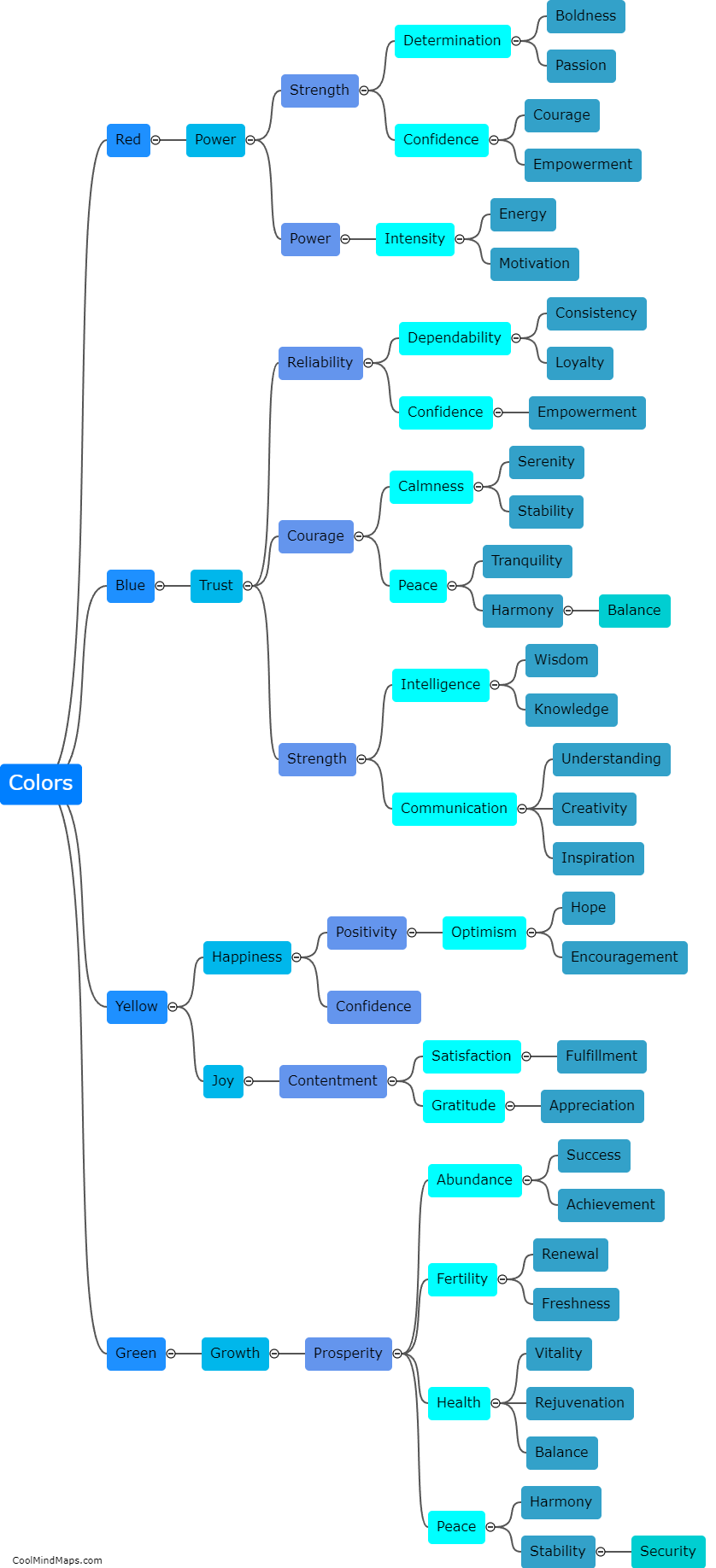What are the risks of running parallel systems?
Running parallel systems can introduce several risks that organizations need to consider. One significant risk is the increased complexity it brings to the overall system architecture. Maintaining and managing multiple parallel systems requires additional resources and expertise, which can result in higher costs and potential operational inefficiencies. Another risk is the potential for data inconsistency or synchronization issues between the parallel systems. If data is not properly synchronized or updated across all systems, it can lead to discrepancies, inaccuracies, or even data loss. Additionally, parallel systems may also increase cybersecurity risks as each system needs to be secured individually, potentially creating more entry points for malicious actors. Therefore, organizations must carefully assess and mitigate these risks to ensure the successful implementation and operation of parallel systems.
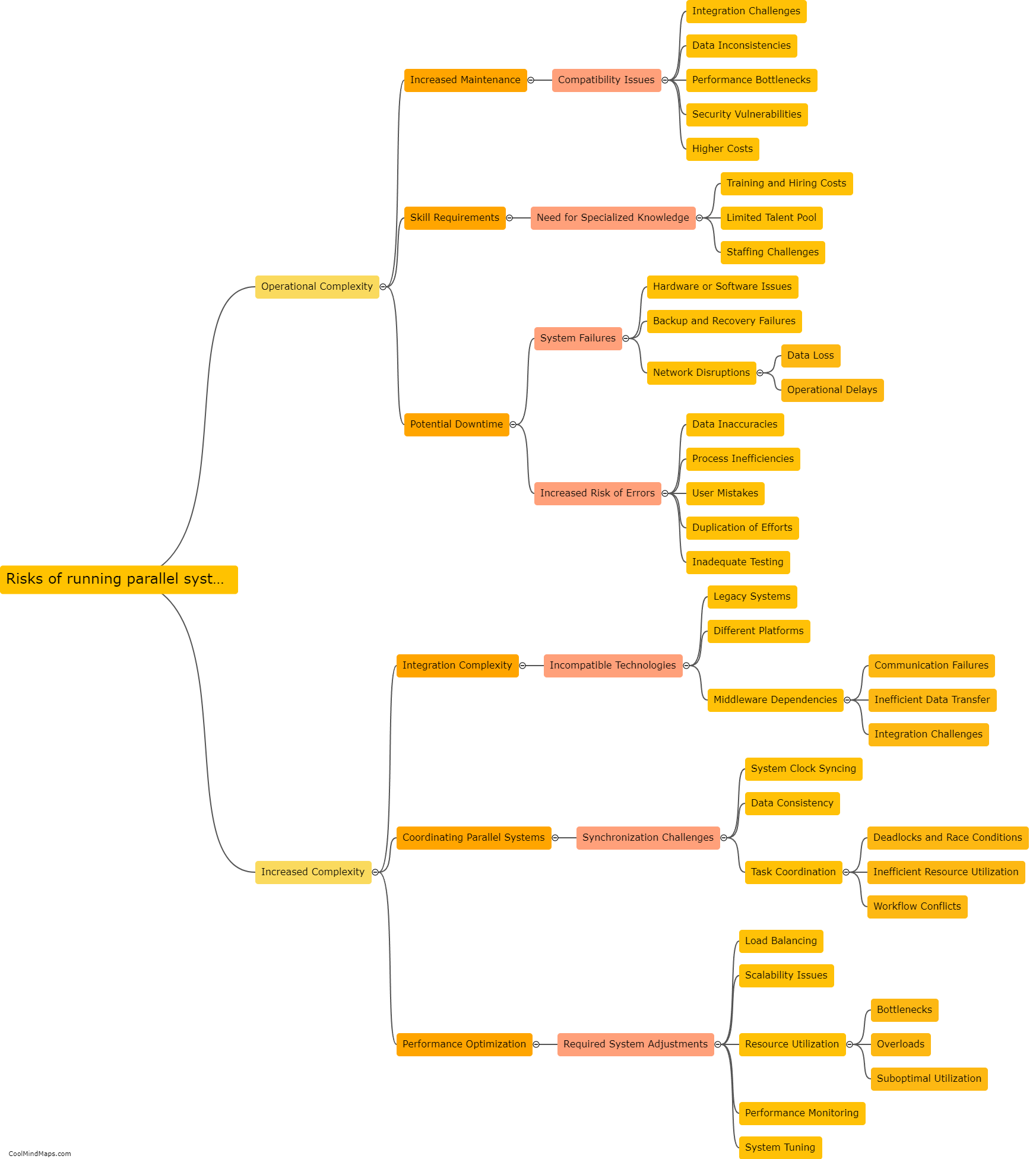
This mind map was published on 31 July 2023 and has been viewed 172 times.
